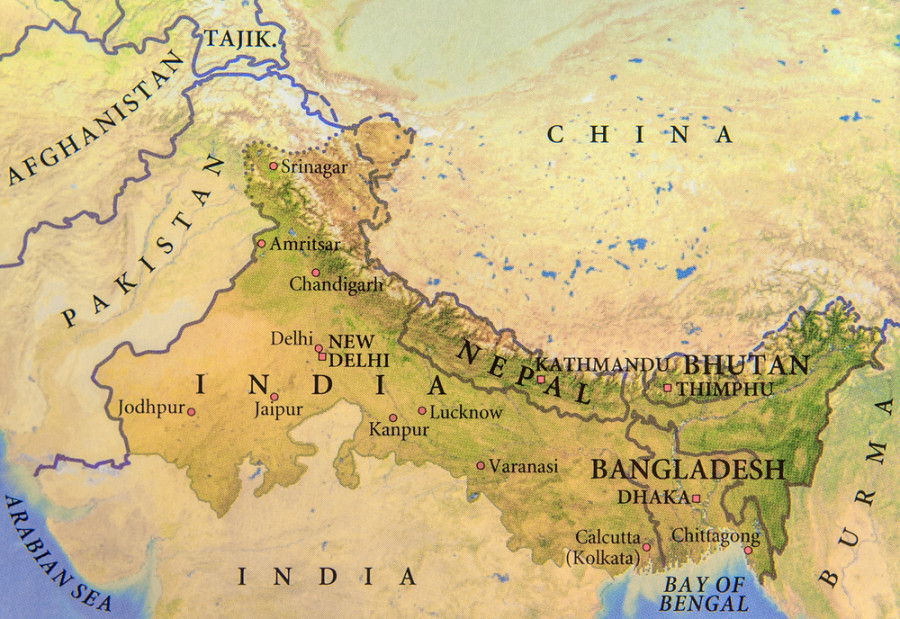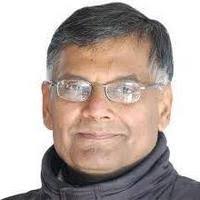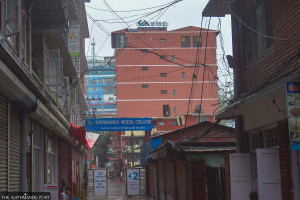Columns
Living with a self-deluded giant
Despite its presence at ‘minilateral’ forums, India has failed to acquire the role it seeks in global affairs.
CK Lal
August is a month of bittersweet memories across much of South Asia. In Pakistan, it is a time of remembrance and rejoicing, tempered by the pangs of a nation’s birth. In India, it’s a season to mark both liberation and loss. Across Bangladesh, it’s a time to reflect on the coup d'etat of 1975 and a revolution gone wrong.
On 16 August 1946, the All-India Muslim League had called for a ‘Direct Action’ to demand a separate homeland for Muslims after the British exit from India. Within a year, Quaid-e-Azam Muhammad Ali Jinnah took over as the first governor-general of what he called the ‘mutilated, truncated, moth-eaten Pakistan’ on 14 August 1947. He remained in office until his death a year later.
For the younger twin that celebrates its independence on 15 August 1947, the day is remembered with a mix of exhaustion from Partition’s upheaval, the thrill of independence, the hope of nationhood, the grief of almost three million lives lost and untold number of families torn apart with at least 14 million people becoming a part of the largest population transfer in history.
Mahatma Gandhi was not in Delhi to hear the ‘A Tryst with Destiny’ speech of Jawaharlal Nehru or witness the unfurling of the flag of the new nation. He was trying to build trust between angry Hindus and petrified Muslims with the help of Huseyn Shaheed Suhrawardy in Calcutta.
Mahatma Gandhi’s spirit had died with the division of the country of his dreams. The Hindutva fanatic who assassinated him probably released his body and mind from the excruciating pain of experiencing communal hatred between what has been termed as ‘two eyes of a fair maiden’ called Hindustan.
The Bangabandhu Sheikh Mujibur Rahman was indeed an awful administrator, had an authoritarian streak and was facing the brunt of severe famine when the founder of Bangladesh was assassinated with most of his family members on 15 August 1975. By toppling his statue on August 5, 2024, the young protesters behind the Monsoon Revolution have tried to erase history. It remains to be seen if they manage to do something worthy of remaining in public memory.
Among the three countries created after the departure of the British from South Asia, Allah, Army and America have dictated the political economy of Pakistan. In over half a century of independence, Bangladesh has followed the Pakistani template of governance, where it is either the military or politicos with tyrannical bands that rule the country.
Only ‘India, that is Bharat’ has remained—howsoever flawed—a functioning democracy. A brief interlude of dictatorial regime during the Emergency (25 June 1975 – 21 March 1977) began with a whimper but ended with a bang by unseating a demagogue depicted as ‘a goddess astride a tiger’.
Brahminical hauteur
When John Kenneth Galbraith was the U.S. Ambassador to India in the early 1960s, Prime Minister Jawaharlal Nehru reportedly told him, “Galbraith, I’m the last English ruler of India.” Educated at Harrow and Cambridge and with accent, taste and manners to match, Nehru indeed was a quintessential English gentleman. But he was much more than his self-description.
A glimpse into Nehru’s mind through three of his books—especially Glimpses of World History, An Autobiography and The Discovery of India—shows that he adored Mauryan greatness, admired the prowess of the Guptas and loved the grandeur of the Mughals. But behind all the veneer of sophisticated acculturalisation and great learning, he was an archetypal Brahmin—and a Kashmiri Pandit at that—with high-caste superciliousness manifesting itself as an insufferable arrogance, a condescending demeanour and an unyielding urge to sermonise others.
Prime Minister and Minister of External Affairs during its formative phase (1951-1964), Nehru laid the foundation of independent India’s internal and external policies. Unlike the failures of Muslim League in Pakistan and fall of Awami League in Bangladesh, the Indian National Congress has managed to keep the unity of India, maintain its integrity through a combination of procedural democracy, nominal secularism and idealistic progressivism.
On the foreign policy front, India punched much above its strategic weight throughout the Cold War as Pakistan joined the Central Treaty Organisation (CENTO) in 1955, the Soviets got involved in the Korean War, China covertly supported communist insurgencies in Southeast Asia and the USA maintained a significant presence in Nepal. The so-called ‘strategic autonomy’ allowed New Delhi to accept the US assistance during the 1962 Sino-Indian War and enlist the support of the USSR in its showdown with the Nixon administration during the Indo-Pakistan war in 1971 for the independence of Bangladesh. Until the dawn of the 21st Century, India was quite content being a middling power on the world stage.
Midway through Prime Minister Manmohan Singh’s two terms (2004—2014) in office, the U.S.-India Agreement for Cooperation Concerning Peaceful Uses of Nuclear Energy (123 Agreement) was signed. All of a sudden, hubristic babus in the South Block—headquarters of New Delhi’s diplomatic establishment—began to think that Washington would do for them what it had done for Beijing after the 1970s, with an infusion of massive investment and transfer of cutting-edge technology.
By lumping Afghanistan and Pakistan together as ‘one challenge in one region’ with his ‘AfPak’ strategy, and inviting India to ‘engage East’ as a partner of the USA for global security, President Barack Obama raised the expectations of the New Delhi elite. The change was slow, but it began with the emergence of what Time magazine called ‘India’s Divider in Chief’ as its strongman.
Precarious pride
The first term of Prime Minister Narendra Modi began on a promising note by inviting leaders of member countries of the South Asian Association for Regional Cooperation (SAARC) to his swearing-in ceremony and with his Neighbourhood First rhetoric. A decade later, SAARC is dormant and the Bay of Bengal Initiative for Multi-Sectoral Technical and Economic Cooperation (BIMSTEC) has failed to take off. It seems New Delhi is wary of multilateralism in a region that it wants to dominate as its preeminent power.
Engaged in physical skirmishes with China, military confrontations with Pakistan, verbal disputes with Bangladesh, tense accommodations with Sri Lanka and a chilly rapprochement with the Maldives, India straddles the region like a lonely giant—its stature growing with an increase in population even as it risks leaving much of South Asia behind. Brahminical haughtiness prevents the South Block from introspection, but fault can’t be laid at others’ door all the time.
Despite its presence at ‘minilateral’—defined as groupings bigger than trilateral but smaller than multilateral—forums, New Delhi has failed to acquire the role it desperately seeks in global affairs. It is not easy to maintain a delicate balance between two evolving camps of Cold War II—Ashley J. Tellis of the Carnegie Endowment for International Peace has called it ‘India’s Great-Power Delusions’.
Nepal shares more than its open border with India—its history, culture and economy are deeply intertwined—but lack of trust has characterised bilateral relationships. Living with a self-deluded behemoth requires immense patience and quiet diplomacy despite occasional exasperation. When Indian Foreign Secretary Vikram Misri comes to Kathmandu on August 17, Nepali politicos will do well to let the professionals of Singhadurbar handle the guests.
Independence Day greetings Pakistan and India; and Good Luck Bangladesh.




 22.55°C Kathmandu
22.55°C Kathmandu

















